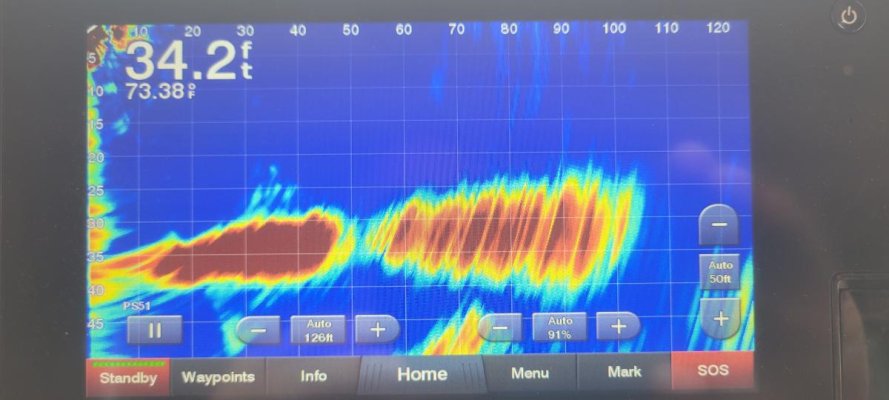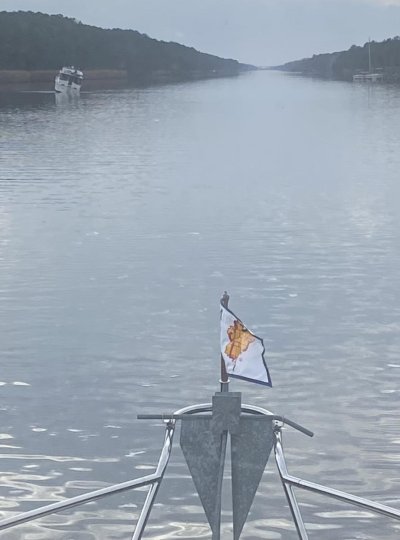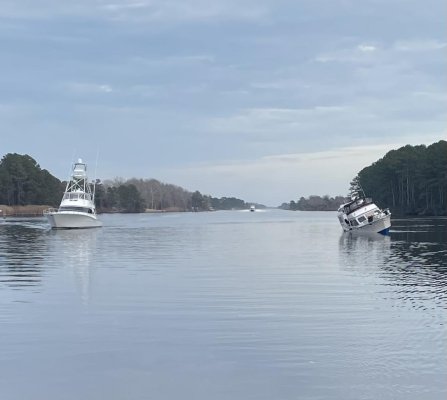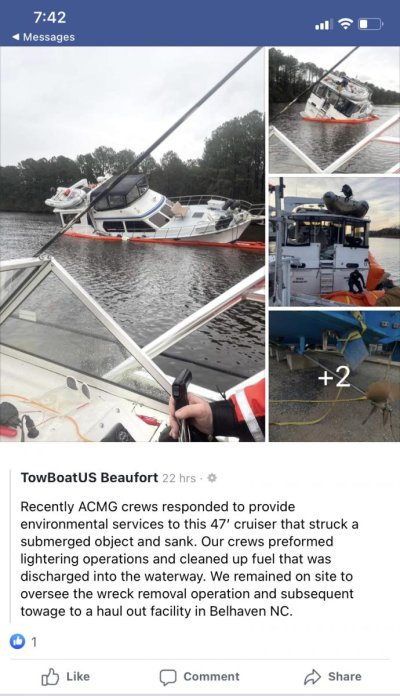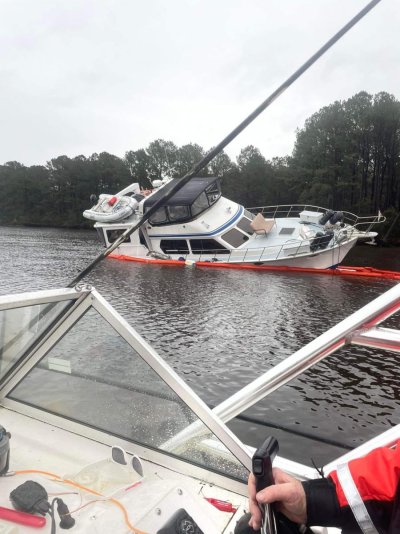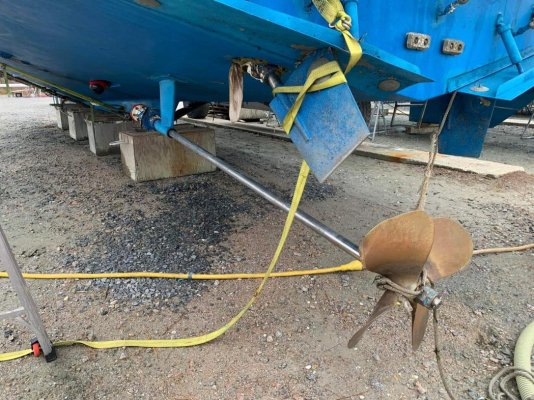I know this is an older topic, but perhaps my experience with a look-ahead sonar will be useful.
In planning our trip from down from the upper Hudson River to South Carolina (about 800nm), I knew we would encounter shoaling in the ICW, particularly opposite the inlets. Having run aground before and never having enjoyed that experience, I purchased the Forward-looking sonar head for my boat, linked to my new Simrad MFD. In addition, I followed the blogs and forums regarding this shoaling, and obtained the latest recommended tracks for the ICE inlets from Bob423.
Here’s what I found:
1. Most of the inlets have nowhere near the 12’ dredged depth that is charted. At least one had only 5’, which was nowhere near the charted or buoyed channel.
2. Some of the Bob432 tracks were helpful, but several were wildly off. That’s no reflection on the people who made the tracks, but rather the constantly changing nature of the inlets
3. Following the buoys near the inlets was maybe a 50-50 reliability. The Army Corps of Engineers is constantly dredging and the buoys are moved accordingly, but they sometimes cannot keep up with the silting.
4. At one inlet (I think Little River in SC) the tracks and buoyage was so far off, I relied on my forward-scan sonar to find my way through. Obviously the color of the water and viewing the water helped as well, but in a few instances it was touch and go
5. We took the Dismal Swamp and the Alligator-Pungo canals, and especially on the latter the forward scan was extremely useful There were numerous sandbars and floating logs on the Alligator-Pungo which you can barely see due to the dark waters. The forward scan showed me that on this canal you really had to stay in the center of the canal. There’s no markers or buoys for the most part on the canals
6. On the Alligator-Pungo, while doing about 6.5 kts we were passed by a 45 ft cruiser going at least 14 kts. As I saw him approaching us from behind, I tried calling him on the VHF asking how he’d like to pass me (so I could scoot a bit over) but no answer. He roared past on my port side, and as he waked us a voice comes over the VHF saying “Bye-Bye!”
Well, he had gone about 1/2 mile when we saw that he had stopped on the left side (down bound) of the channel. When we got closer, this is what we saw. He had run right over a sandbar, ripping out his starboard prop shaft; the shaft with the drive saver pulled all the way out of the boat, stopped only by the strut. Left a gaping hole in the boat

